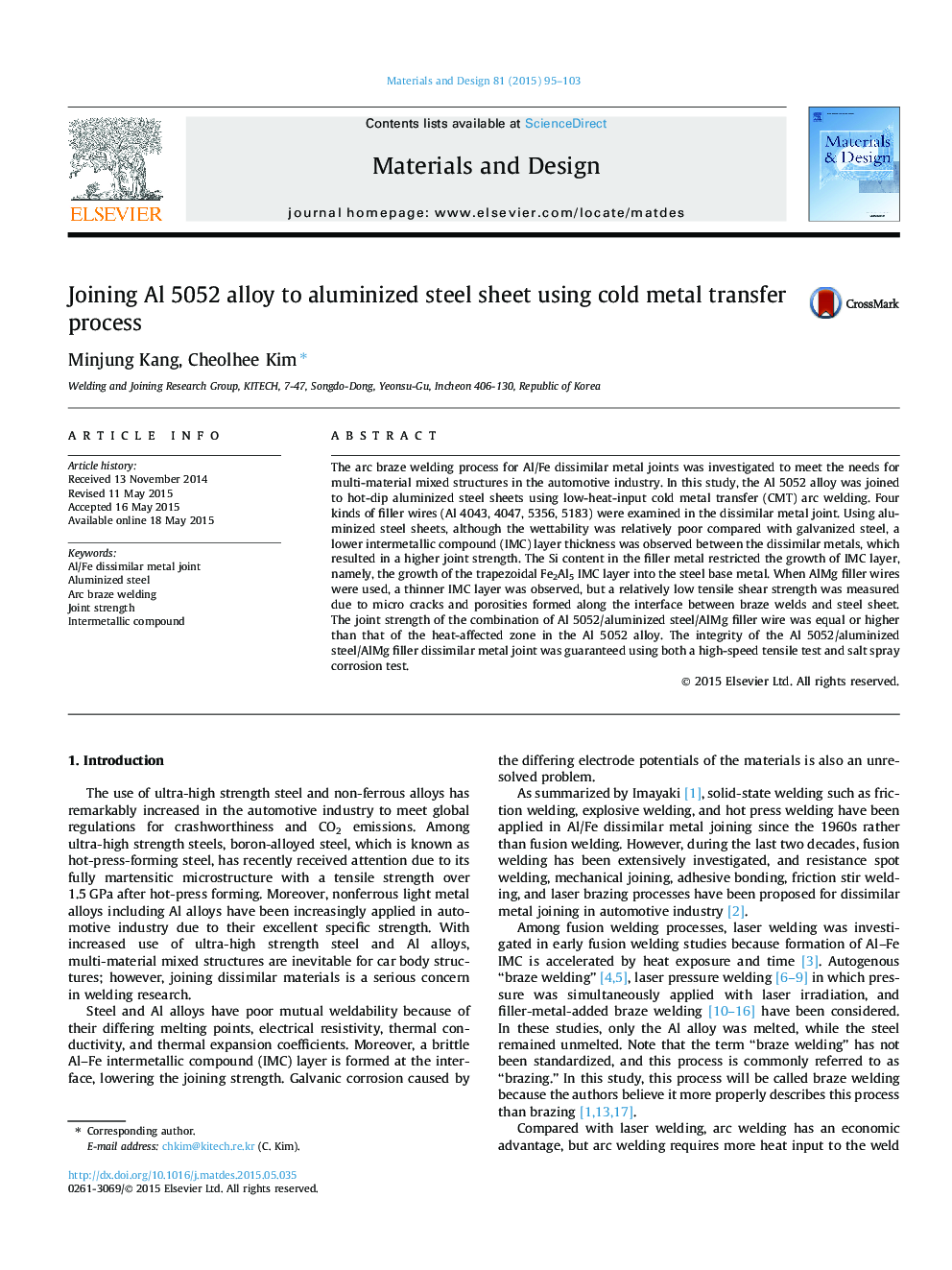| Article ID | Journal | Published Year | Pages | File Type |
|---|---|---|---|---|
| 828516 | Materials & Design (1980-2015) | 2015 | 9 Pages |
•Aluminized steel showed better weldability in dissimilar metal joining, compared with galvanized steel.•The intermetallic layer for Al/aluminized steel is thinner than that for Al/galvanized steel.•The Fe-Al-Si layer formed during hot-dip aluminizing limits IMC growth.•Al alloy/aluminized steel joint has higher strength than HAZ of the Al alloy.
The arc braze welding process for Al/Fe dissimilar metal joints was investigated to meet the needs for multi-material mixed structures in the automotive industry. In this study, the Al 5052 alloy was joined to hot-dip aluminized steel sheets using low-heat-input cold metal transfer (CMT) arc welding. Four kinds of filler wires (Al 4043, 4047, 5356, 5183) were examined in the dissimilar metal joint. Using aluminized steel sheets, although the wettability was relatively poor compared with galvanized steel, a lower intermetallic compound (IMC) layer thickness was observed between the dissimilar metals, which resulted in a higher joint strength. The Si content in the filler metal restricted the growth of IMC layer, namely, the growth of the trapezoidal Fe2Al5 IMC layer into the steel base metal. When AlMg filler wires were used, a thinner IMC layer was observed, but a relatively low tensile shear strength was measured due to micro cracks and porosities formed along the interface between braze welds and steel sheet. The joint strength of the combination of Al 5052/aluminized steel/AlMg filler wire was equal or higher than that of the heat-affected zone in the Al 5052 alloy. The integrity of the Al 5052/aluminized steel/AlMg filler dissimilar metal joint was guaranteed using both a high-speed tensile test and salt spray corrosion test.
Graphical abstractFigure optionsDownload full-size imageDownload as PowerPoint slide
